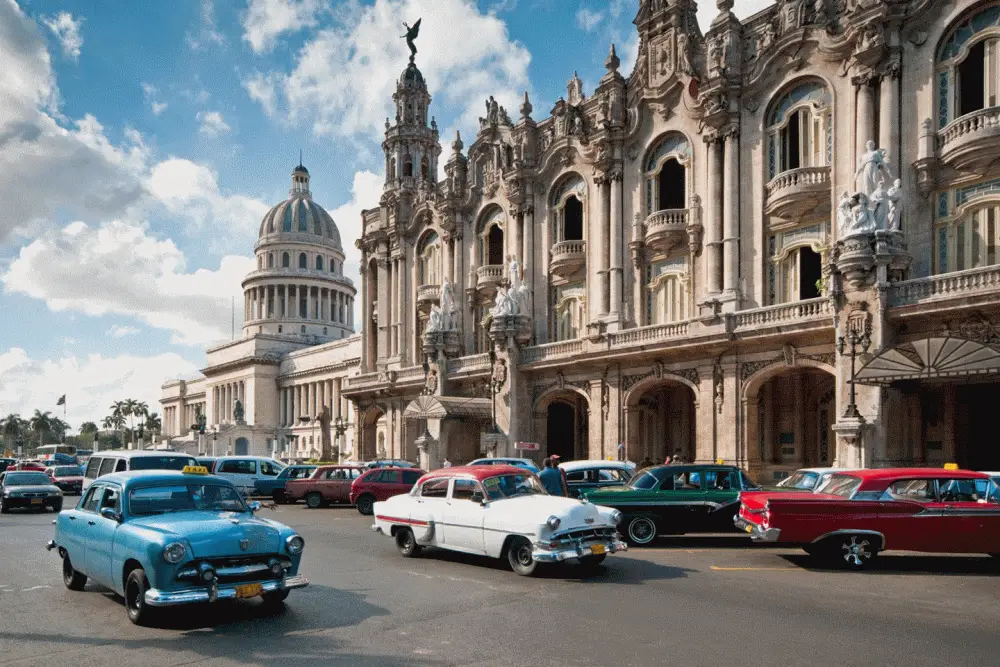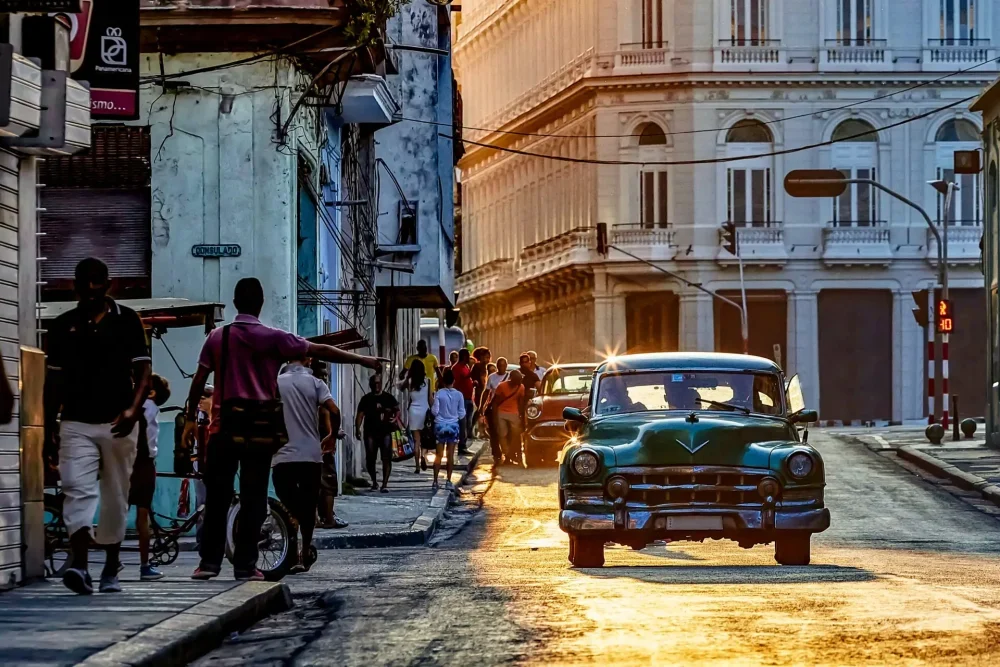The capital of Cuba is not just a city, but an open-air chronicle. Every corner is a frame from a historical film, every street is an invitation to dialogue with epochs. Havana’s landmarks are not gathered in a museum hall – they are scattered throughout colonial quarters, bustling squares, and waterfronts with the scent of the sea and rum. A city that cannot be “seen” in one day – it must be felt.
Old Havana – the heart of the city and the cultural core
Cobbled stone streets, baroque facades, wrought-iron balconies, street musicians, and the aroma of coffee – everything here is imbued with the spirit of the past. The district is included in the UNESCO World Heritage List, and not by chance: it is here that the immersion into the history of Havana, its architecture, and way of life begins. Havana’s landmarks are most often associated with such a district, as it concentrates the highest number of colonial monuments.

Plaza de Armas – the colonial epicenter
The oldest square in the city and, essentially, its symbolic foundation. Once military parades took place here, and now it hosts antique fairs and tours. The square is surrounded by important buildings – the Museum of City History, the Governor’s residence, the library. Tourists come here not only for beautiful photos but also to feel the rhythm of the old city, where each facade tells its own story.
Cathedral Square – a sacred and architectural gem
The square is a true baroque parade. Here rises the Cathedral of Saint Christopher, better known as Havana Cathedral. Its facade is asymmetrical, emphasizing the beauty of architectural lines. The square is one of the quietest and most atmospheric in the city. Looking for spirituality and visual harmony in Havana? This is the place.
Plaza Vieja – Cuban painting in urban format
Rich colors, balconies with greenery, modern sculptures, and architecture without unnecessary pathos make Plaza Vieja one of the liveliest in the city. Artists meet here, children play, and you can fall in love with Cuba through the eyes of its residents. The space is not about the past, but about the present – gastronomy, music, Cuban culture in all its expressiveness.
Capitol of Havana – a symbol of the renewed capital
The monumental building in the style of the American Capitol has been restored and reopened for visits. It is not just an administrative structure but an important point on the tourist map. The interiors impress with marble, frescoes, and statues, while outside – endless columns. Among Havana’s landmarks, it plays a special role – a symbol of the city’s modern face, striving to preserve the past and move forward.
Malecon – a waterfront where epochs meet
The Havana waterfront stretches for almost eight kilometers along the sea and serves not only as a promenade but also as an open-air theater. Lovers, fishermen, artists, and passersby meet here. The sunset view from Malecon is a separate pleasure. One of those landscapes that are impossible to forget. It lives in every film about Cuba, and it is here that tourism in Havana is best felt.
Hemingway Museum – the writer’s personal history in Cuba
The Hemingway House-Museum is located slightly off-center, but it is worth a visit for anyone interested in Cuban literature and culture. Here, the writer’s personal belongings, his library, hunting trophies, and the famous yacht Pilar are preserved. Tours allow you to touch the life of a man who called the country his home and inspiration. Not just a museum, but a part of the city’s living cultural memory.
El Morro Fort – a military shield and panoramic viewpoint
The entrance to the bay is guarded by a powerful stone structure – a fort built in the 16th century. It impresses with its size, system of underground passages, and observation platforms offering panoramic views of the city and the ocean. In the evening, a cannon firing ceremony is held here – a tradition that has been preserved since colonial times. One of the most recognizable landmarks in Havana that should not be missed.
What else to do in Havana besides exploring landmarks: active options
In addition to historical routes and museums, the capital of Cuba offers many other ways to immerse yourself in the atmosphere. Here’s what you can do if you want to add dynamics to your vacation:
- Take a ride around the city in a vintage convertible, feeling the spirit of the 50s;
- Attend a carnival or street concert at Revolution Square;
- Visit the legendary bars El Floridita and La Bodeguita del Medio;
- Browse boutiques of local designers and buy authentic souvenirs;
- Sign up for a masterclass in Cuban dance or cigar rolling.
Such activities fill the trip with emotions and personal discoveries, turning the tour into an adventure.
Cuba and tourists: what you need to know before your trip?
Before visiting the island, it is important to consider several aspects. Cuba has local laws for tourists that may differ from familiar norms: respect for culture is valued here, cautious behavior in political matters, and an understanding that not everything is available in digital format. The internet is unstable, it’s better to prepare cash for payment, and conversations with locals sometimes replace any guidebooks. Let’s look at some practical tips:
- Do not use drones without permission – it is prohibited by law;
- Always have your passport or a copy with you;
- Do not photograph military and police facilities;
- Respect private homes, even if they look like ruins;
- Find out in advance which areas to avoid.
Following the rules makes tours in Havana not only interesting but also safe.

Onward to exploring Havana’s landmarks!
Havana’s landmarks are not just a list of places, but a reflection of its temperament, tragedies, and celebrations. The city tells its story through museums, squares, fortresses, hotels, monuments, and lively streets. In every building, glance, sound, and scent – there is Cuba, which you want to not just remember but feel.
If you are still wondering what to see in Havana, start with the heart – the old city. But don’t stop there – open up the panorama from the fort, chat with the bartender at El Floridita, feel the surge of emotions on Malecon, and perhaps you will understand: you will return here again.
 en
en  ar
ar  de
de  es
es  fr
fr  nl
nl  hi
hi  it
it  pt
pt  el
el 



